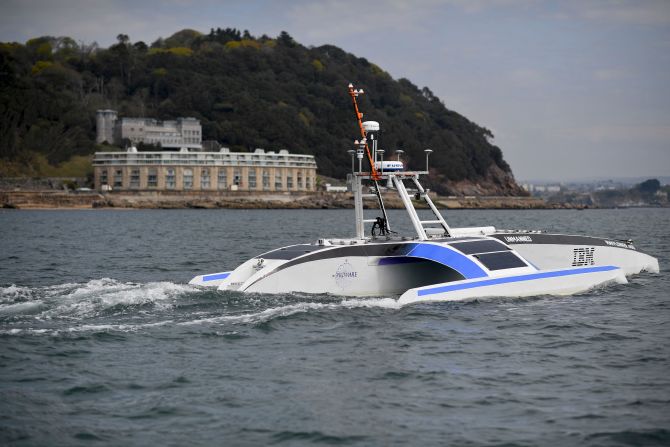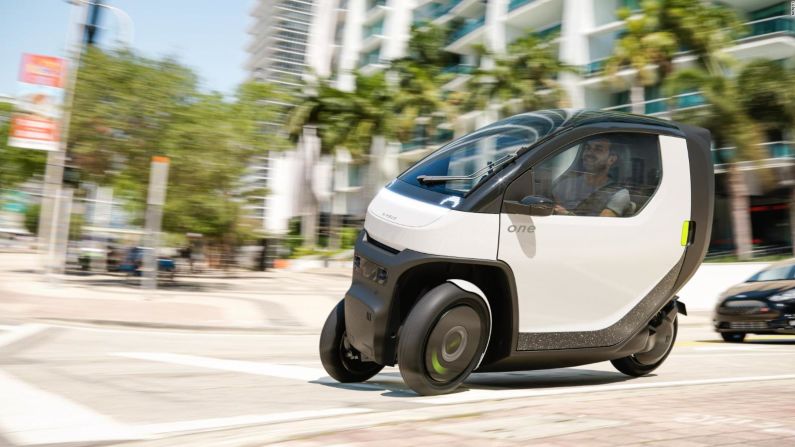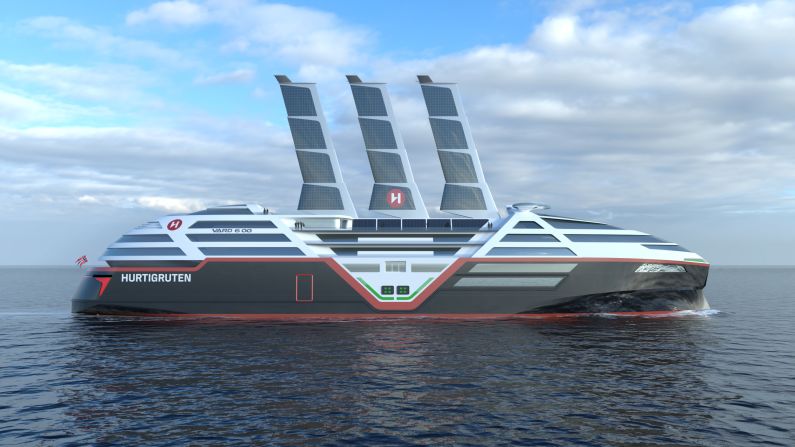International shipping moves 80% of global trade and accounts for about 3% of the world’s carbon emissions, but right now, it’s not on course to meet its climate targets.
A year ago, the International Maritime Organization — the UN agency that regulates shipping — tightened emission targets for the shipping industry, aligning it with other industries aiming to achieve net zero emissions by 2050. But low-emission fuels like methanol, hydrogen and ammonia are not becoming available fast enough.
Now, Jess Adkins, a chemical oceanographer from the California Institute of Technology (Caltech) thinks he can lend a hand by equipping cargo ships with reactors capable of turning the carbon dioxide (CO2) emitted from burning fuel into ocean salts, which he says will keep it locked away for 100,000 years.
The process is similar to what’s already naturally happening in the oceans. “This is a reaction that the planet has been running for billions of years,” said Adkins, who founded Calcarea, a startup that is designing and testing the reactors.
“If we can just speed it up, we have a shot at a safe and permanent way of storing CO2.”
Natural, but faster
Seawater naturally absorbs about a third of the CO2 emitted into the atmosphere, making the water more acidic and causing it to dissolve calcium carbonate, which is abundant in the ocean. “Calcium carbonate is what coral skeletons, shells and all the things that make up most of the sediments at the bottom of the ocean are made of,” said Adkins.
The dissolved calcium carbonate then reacts with the CO2 in the water to form bicarbonate salts, locking the CO2 away. “There are already 38,000 gigatons (38 trillion tons) of bicarbonate in the ocean right now,” Adkins added.
Calcarea wants to mimic this natural process by funneling the ship’s exhaust fumes to a reactor in the ship’s hull, where the fumes are vigorously mixed with seawater and limestone — a type of rock mostly made of calcium carbonate, and a common ingredient in concrete. The CO2 in the exhaust fumes reacts with the mixture, creating salty water that locks the CO2 away in the form of bicarbonate salts. Adkins says that with a full-scale reactor, he aims to capture and store about half of a ship’s CO2 emissions.
In the natural world, the reaction takes over 10,000 years, according to Adkins, but in Calcarea’s reactors it takes about a minute, he said. This is achieved by bringing the CO2 and the limestone into intimate contact with each other.
The salty water that’s created is simply released into the ocean, where it poses no threat to marine life or to the seawater’s chemical balance, according to Adkins. He added that the company is also looking into adding a pre-filter to the system to get rid of other pollutants from the exhaust that might get mixed into the water, such as particulates and unburnt fuel, as well as other contaminants.
After two years of working on the project, in January 2023 he spun the company out of Caltech, where he is still a professor, albeit on leave. He was joined by three co-founders: Caltech undergraduate Melissa Gutierrez, engineer Pierre Forin, and University of Southern California (USC) professor and geochemist Will Berelson.
They raised $3.5 million in funding and focused on the shipping industry. “The beautiful part is that the ship is a natural water pump,” Adkins said, noting that the system requires water to be constantly moving around for the reaction between the various elements to happen, something that is provided naturally by a ship’s movement.

So far, Calcarea has built two prototype reactors, one in the USC parking lot and one in the Port of Los Angeles. In late May, the company announced a partnership with the research and development arm of international shipping company Lomar. Adkins is confident this will lead to the first full-scale prototype of his reactor to be fitted on a ship.
The reactors will be tailored to different ship sizes, including “the biggest there are,” the “Newcastlemax” class capable of carrying 180,000 metric tons of cargo. “On one of these we would take up about 4 to 5% of the deadweight tonnage and carry about 4,000 metric tons of limestone. But we won’t actually use up all of that,” Adkins said.
Carbon capture at sea
Before Calcarea is ready to install its first reactor, there are some engineering challenges left to solve. For example, how exactly to fit the reactor on the ship and the logistics of loading the limestone and setting up the supply chain to deliver it. These could be slow steps, Adkins warns.
The cost of the system comes in, at current estimates, at about $100 per ton of CO2 captured at the exhaust, which includes the revenue the ship loses by making space for the reactor at the expense of commercial payload.
Some cargo ships already have similar devices on board, called scrubbers. They are designed to capture and discharge sulfur emissions — harmful to human health and the environment — but not CO2. As of June 2023, they were installed in about 5% of the global merchant fleet, according to the British Port Association, although studies have found that the wastewater from scrubbers can be “acutely toxic for aquatic organisms.” Calcarea’s reactors also capture sulfur as part of their CO2 removal process.
Wind power could be set for a comeback
Carbon capture technology more directly similar to Calcarea’s also exists. A British company called Seabound, for example, makes a device that captures between 25% and 95% of a ship’s CO2 emissions. However, it produces solid carbonate pebbles that must be offloaded at a port.
According to Daniel Sigman, a professor of Geological and Geophysical Sciences at Princeton University, who isn’t involved with Calcarea, the company’s approach has a range of advantages over similar strategies that are being pursued. First, it is the acceleration of a natural process that would occur anyway. Second, because the reaction occurs in an engineered reactor on the ship and does not fully consume the CO2 supply, it will not raise the ocean’s acidity levels and won’t contribute to the problem of ocean acidification, which is harmful to marine life.
Because the founders of Calcarea are experts in the ocean’s carbon cycle, he added, that makes them well positioned for avoiding potential pitfalls of CO2 removal: “Many other companies pursuing ocean alkalinity enhancement do not understand the carbon cycle at all relevant scales, and so are prone to pursue approaches that are ineffective — or even counterproductive.”
Adkins believes that Calcarea could help the industry decarbonize during the transition to greener fuel, and that in the more distant future the reactors could even take up the entirety of the space on special vessels, designed to lock away CO2 that has been captured on land from the atmosphere, as an alternative to storing it underground.
“We think that ships are actually going to be able to compete with underground CO2 storage,” he said. “Purpose-built ships that pick up CO2 and limestone at a port, go out to sea and just run our reaction — they will be solely machines to efficiently and safely store carbon in the ocean as bicarbonate.”



















